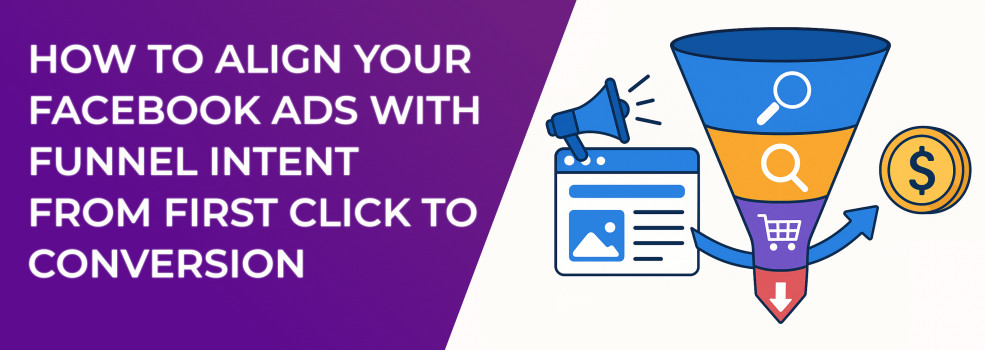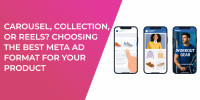When you open Ads Manager it is tempting to hit "Publish" and assume the algorithm will figure everything out. The brands that scale profitably on Facebook, especially in crowded markets, ask a different question:
“What does my prospect want right now, and how can this ad move them one step closer to saying yes?”
That single question sits at the heart of funnel intent. This guide shows you how to build campaigns that match each impression to the prospect’s mindset, from the first curious scroll to the final checkout click.
1. Start With Funnel Mapping, Not Media Buying
Before you launch ad sets—or even create a custom audience on Facebook—take ten minutes to sketch your customer’s journey. Understanding what people think at every stage helps you choose the right objective, creative, and budget.
Below is a quick reference chart that highlights how strategy changes as intent rises.
For a deeper breakdown of every campaign goal, see Meta Ad Campaign Objectives Explained.
Keep this table handy as you read; every optimisation decision flows from it.
2. Match Audiences to Intent
A perfectly crafted message will still fail if it lands in the wrong news feed. Let’s look at how audience selection lines up with funnel intent so that each ad feels like the next logical step for the user. If audience research feels daunting, Facebook Ad Targeting 101 walks you through the fundamentals before you dive into the tactics below.
Awareness: Cast a Wide Yet Relevant Net
Spend time feeding Meta enough data to learn while keeping reach broad. Upload custom lists—past buyers, high‑engagement subscribers—to seed lookalikes, then add age, location, and interest layers that mirror your best customers. Wide targeting allows the algorithm to find pockets of cheap impressions without pigeonholing you into overly narrow interests.
Consideration: Warm the Middle
Once curiosity is sparked, separate viewers by recency and depth of engagement. A seven‑day video‑viewer pool receives trust‑building education, while a 30‑day site visitor sees social proof and feature breakdowns. By showing the right evidence at the right moment you keep momentum alive.
Conversion: Get Surgical
Hot prospects have signalled clear buying intent—cart views, pricing‑page visits, or add‑to‑cart events. Retarget them with product‑focused creative using dynamic ads that pull exact SKUs, prices, and reviews. Pair a clean pixel with server‑side events so purchase data lands even when cookies disappear.
3. Craft Creative That Feels Native to Each Stage
Creative is the first thing a prospect notices, so it must echo their current intent. Below is a cheat sheet followed by practical context so you can adapt quickly.
Awareness Ads
Short video or user‑generated footage.
Opening hook that names a pain point: “Still juggling spreadsheets?”
Soft call to action like “See how we save founders eight hours a week.”
The goal is simple: earn a moment of attention and plant a memorable problem‑solution seed.
Consideration Ads
Testimonial carousel or side‑by‑side comparison.
Clear value proposition: “Four times faster deployment than the leading alternative.”
Call to action: “Watch the two‑minute demo.”
Here you must demonstrate authority and prove earlier promises with evidence that feels believable.
Conversion Ads
Urgency or scarcity (“Ends tonight: 20 percent off”).
Social‑proof snippet.
Direct button: “Start Free Trial.”
Matching creative tone and offer to user intent improves engagement and conversion rates.
Your prospect is ready. Remove friction, answer last‑minute objections, and give a compelling reason to buy now.
4. Let the Algorithm Work—But Keep It Under Control
Campaign Budget Optimisation (CBO) – Launch with at least three ad sets and a modest daily budget. If the learning limited flag persists, merge similar ad sets to concentrate data.
Bid Strategy Hygiene – Start on Lowest Cost to harvest cheap data, then switch to Cost Cap once fifty or more stable conversions arrive each week.
Tracking Discipline – Verify events in Events Manager and trigger a test purchase every quarter to catch broken pixels before they derail reporting.
Creative Rotation – Refresh hooks every seven to ten days in high‑spend ad sets. A clear naming system like “UGC_Sarah_30s” makes winners easy to spot and protects fatigue‑prone audiences.
Follow these guard‑rails and you can trust the algorithm to hunt for incremental conversions without torching your margins.
5. Measure What Matters and Iterate
When conversions stall, run through this checklist: Facebook Ads Not Converting: How to Fix It.
Marketers often drown in dashboards. A disciplined metric‑to‑intent approach keeps focus tight:
Awareness – Prioritise CPM trendlines and three‑second video views to gauge thumb‑stop power.
Consideration – Focus on landing‑page load rate and cost per engaged user. Cheap clicks are useless if pages never render.
Conversion – Track both front‑end CPA and seven‑ or twenty‑eight‑day ROAS so you catch long‑tail profit or hidden bleed.
If numbers slip, hunt for a message‑to‑audience mismatch first. Shifting an under‑performing ad set to the correct funnel layer fixes more issues than rewriting copy.
6. Final Thoughts
Aligning Facebook ads with funnel intent is a disciplined framework rather than a growth hack. When each step feels like a natural next move—and when data, creative, and bidding work together—the algorithm turns into an amplifier, not a gambler. Draft your funnel map, apply these principles, and watch a casual scroll evolve into a profitable customer relationship.

